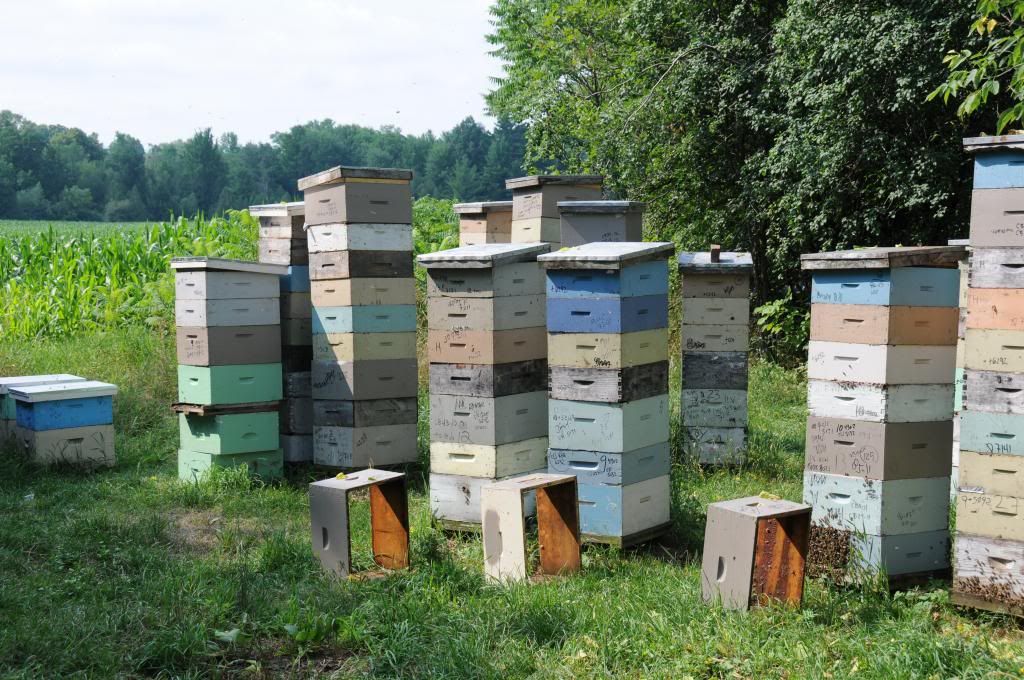The bottom three boxes on each hive are the brood nest. You can see that the medium isn't necessarily on top.
OK, you use normal system and with flexiple way.
I know a professional beekeeper whose backbone was surged at the age of 30. After that he has used merely mediums. And I know many too, who uses mediums.
You have much hives, 700. In Finland the raw honey price is better than USA.
Here professional beekeeper has perhaps 500 or 700 hives, but he must run many kind of business inside beekeeping, like queen selling, hive selling, to buy honey from othet beekeepers.
No one pays here for pollinating services.
Problem of Finnish beekeepers is that beekeeping season is very short. It is then heavy physically. July is the main yield period. August gives almost nothing. In special cases biggest hives get surplus in June.
Best yields we get from woods, but there are districts wher only yield plant is canola. And now necotioid ban is stopping the cultivation of canola.
Queen rearing period is short too. Practically it is 2 - 2,5 months.
It means too that a huge number of queens must be produced in short time, mated, and handled forwards.
Our danldlions and apple trees bloom at the first week of June and 10.8 flowers are over.
Willows start to bloom first of May.
Sometimes August is good and sometimes rainy However nature prepare itself for winter, and hives have not much to do. Hives consume 10-15 kg honey during August. That is why professionals take off all honey and start sugar feeding very early.
To rear queens any more in August is an usure job.
.






